Abstract
In an effort to compare different methods of instructing patients, 99 women 18-25 years of age were given computer, spoken, weitten, or no instructions for the collection of a clean voided urine specimen. The group who received computer instructions was the most uniform in its performance (P less than 0.002, F-test) and reported the fewest procedural problems (P less than 0.02, Fisher test). In addition, this group had fewer contaminating bacteria than the group who received written instructions (P less than 0.03 , Mann-Whitney test). The group who received no instructions had more bacteria (P less than 0.0001, Mann-Whitney test) than any of the other groups. The effectiveness of the computer instruction was probably related to numerous attributes, including the individualized quality of the dialogue, self-pacing, self-testing, and privacy.
Full text
PDF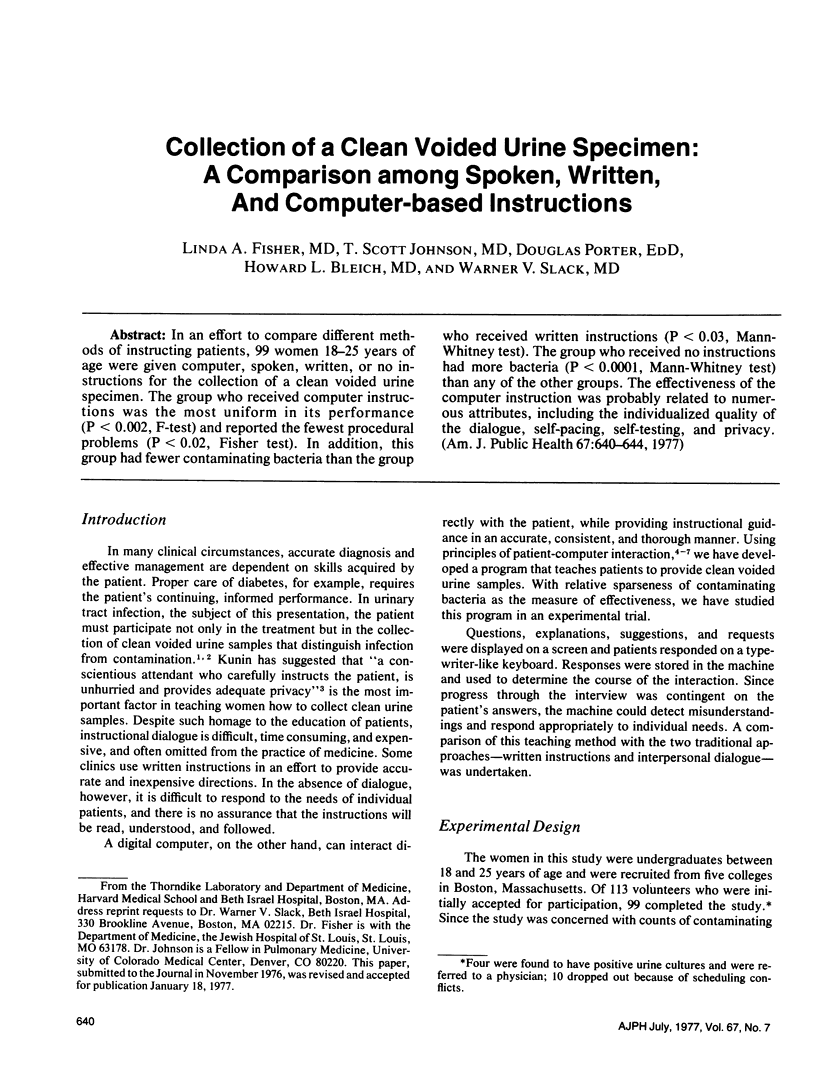
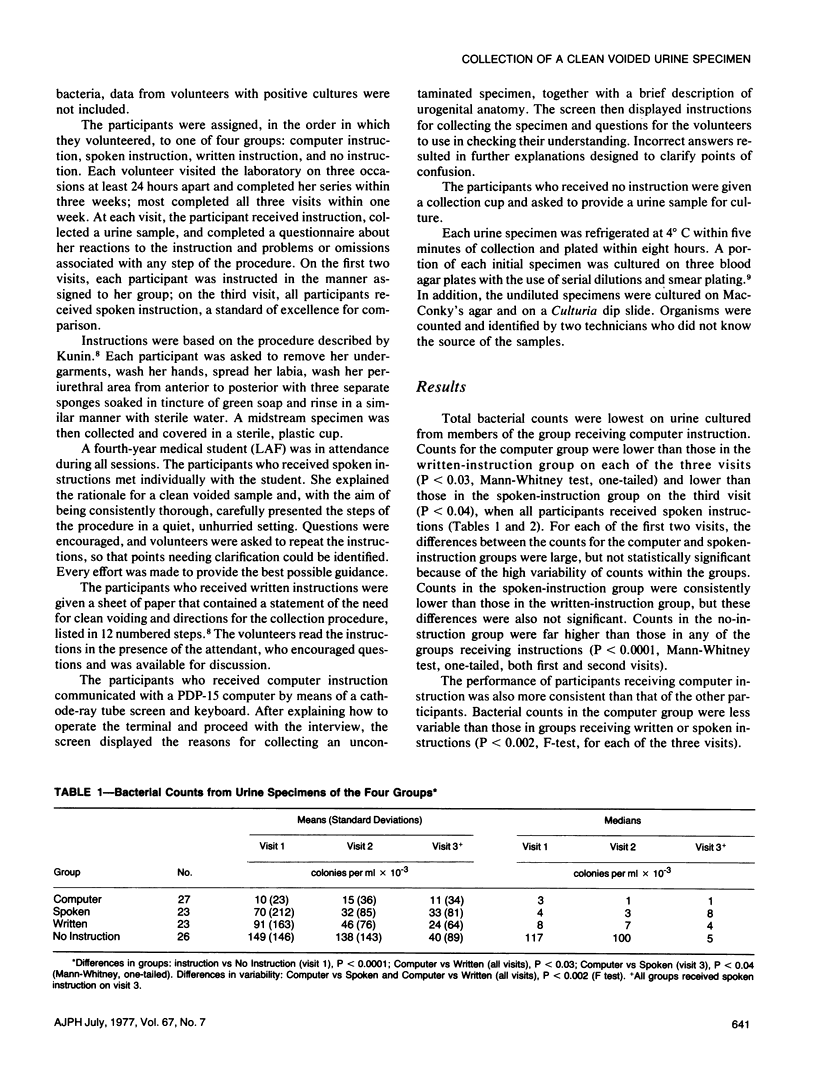
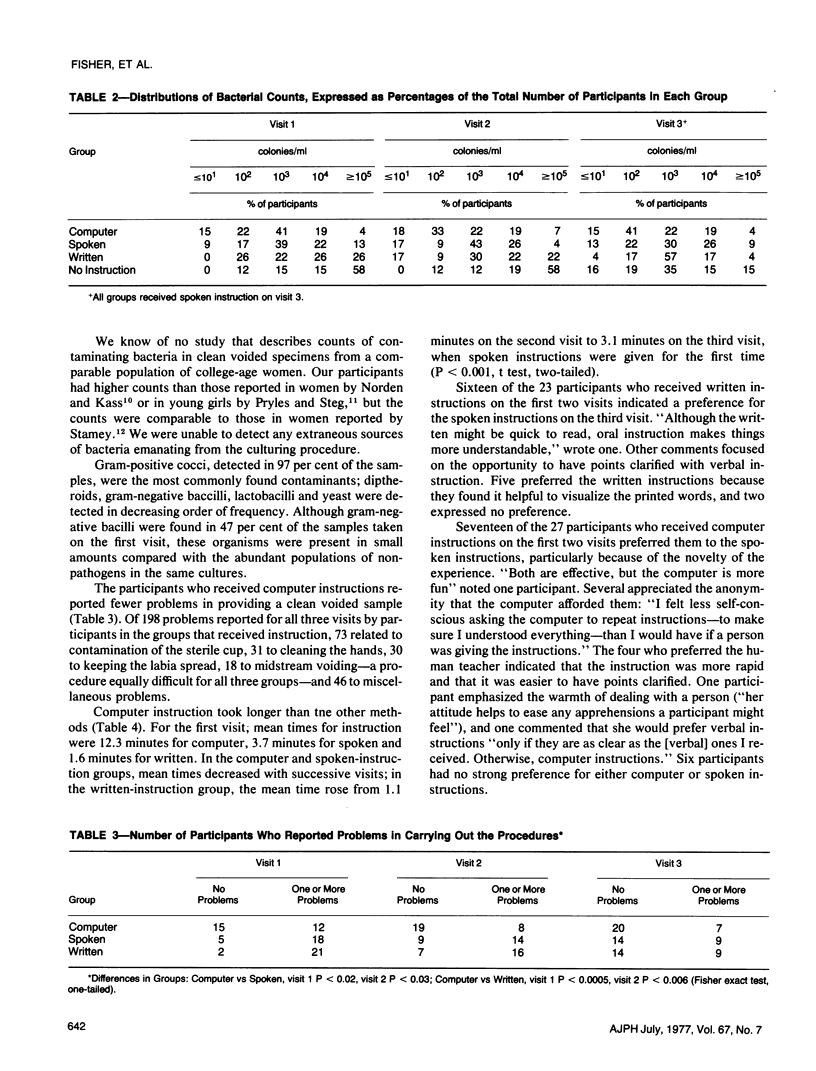
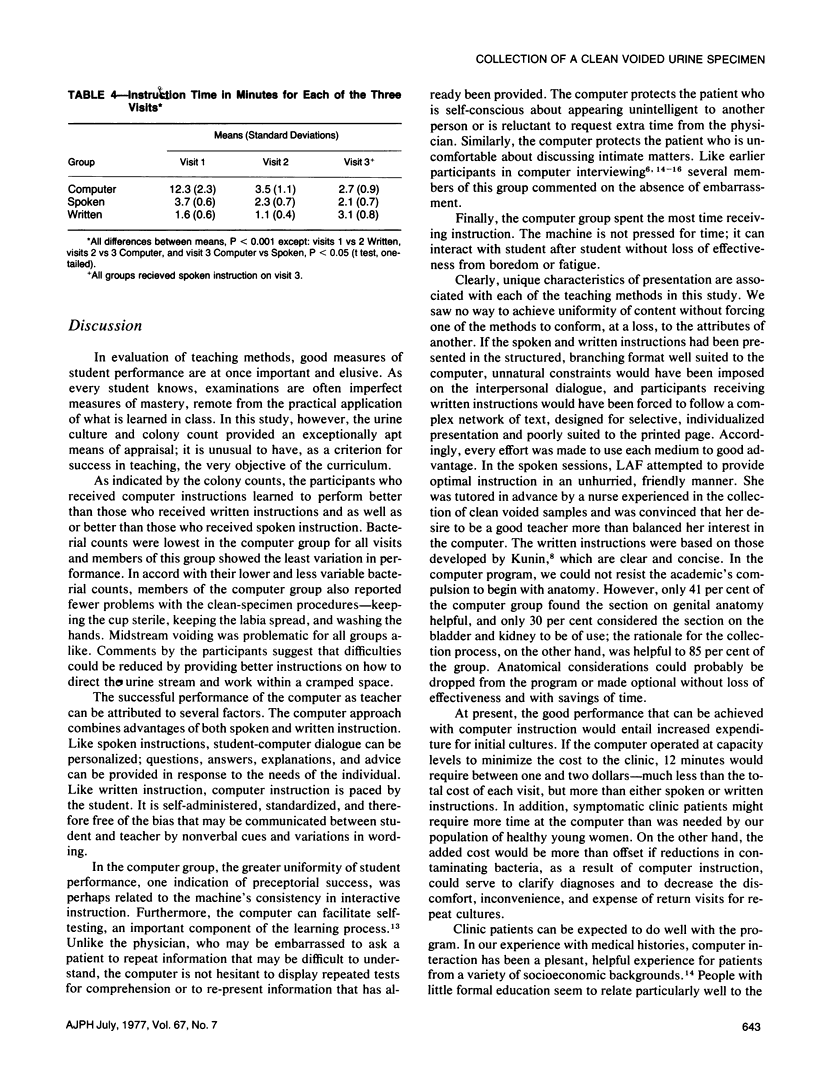
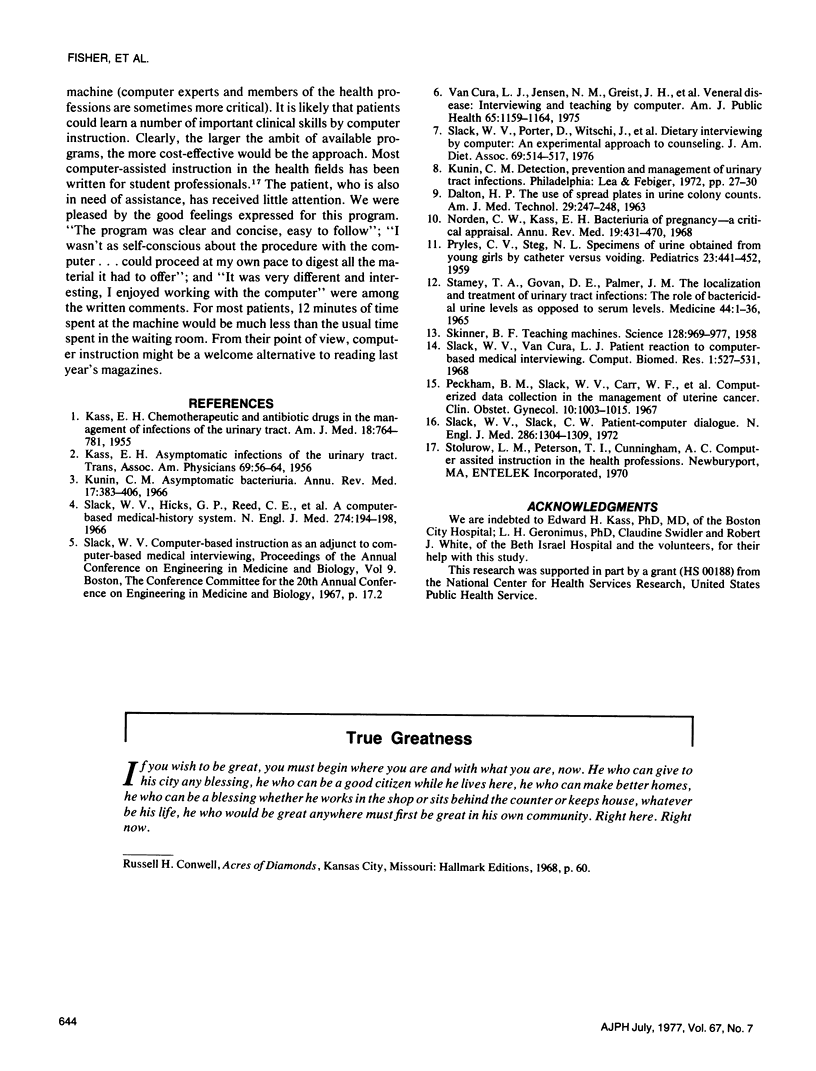
Selected References
These references are in PubMed. This may not be the complete list of references from this article.
- DALTON H. P. THE USE OF SPREAD PLATES IN URINE COLONY COUNTS. Am J Med Technol. 1963 Jul-Aug;29:247–248. [PubMed] [Google Scholar]
- KASS E. H. Asymptomatic infections of the urinary tract. Trans Assoc Am Physicians. 1956;69:56–64. [PubMed] [Google Scholar]
- KASS E. H. Chemotherapeutic and antibiotic drugs in the management of infections of the urinary tract. Am J Med. 1955 May;18(5):764–781. doi: 10.1016/0002-9343(55)90190-x. [DOI] [PubMed] [Google Scholar]
- Kunin C. M. Asymptomatic bacteriuria. Annu Rev Med. 1966;17:383–406. doi: 10.1146/annurev.me.17.020166.002123. [DOI] [PubMed] [Google Scholar]
- Norden C. W., Kass E. H. Bacteriuria of pregnancy--a critical appraisal. Annu Rev Med. 1968;19:431–470. doi: 10.1146/annurev.me.19.020168.002243. [DOI] [PubMed] [Google Scholar]
- PRYLES C. V., STEG N. L. Specimens of urine obtained from young girls by catheter versus voiding; a comparative study of bacterial cultures, gram stains and bacterial counts in paired specimens. Pediatrics. 1959 Mar;23(3):441–452. [PubMed] [Google Scholar]
- Peckham B. M., Slack W. V., Carr W. F., Van Cura L. J., Schultz A. E. Computerized data collection in the management of uterine cancer. Clin Obstet Gynecol. 1967 Dec;10(4):1003–1015. doi: 10.1097/00003081-196712000-00015. [DOI] [PubMed] [Google Scholar]
- STAMEY T. A., GOVAN D. E., PALMER J. M. THE LOCALIZATION AND TREATMENT OF URINARY TRACT INFECTIONS: THE ROLE OF BACTERICIDAL URINE LEVELS AS OPPOSED TO SERUM LEVELS. Medicine (Baltimore) 1965 Jan;44:1–36. doi: 10.1097/00005792-196501000-00001. [DOI] [PubMed] [Google Scholar]
- Slack W. V., Hicks G. P., Reed C. E., Van Cura L. J. A computer-based medical-history system. N Engl J Med. 1966 Jan 27;274(4):194–198. doi: 10.1056/NEJM196601272740406. [DOI] [PubMed] [Google Scholar]
- Slack W. V., Slack C. W. Patient-computer dialogue. N Engl J Med. 1972 Jun 15;286(24):1304–1309. doi: 10.1056/NEJM197206152862408. [DOI] [PubMed] [Google Scholar]
- Slack W. V., Van Cura L. J. Patient reaction to computer-based medical interviewing. Comput Biomed Res. 1968 May;1(5):527–531. doi: 10.1016/0010-4809(68)90018-9. [DOI] [PubMed] [Google Scholar]
- Slack W., Porter D., Witschi J., Sullivan M., Buxbaum R., Stare F. J. Dietary interviewing by computer. An experimental approach to counseling. J Am Diet Assoc. 1976 Nov;69(5):514–517. [PubMed] [Google Scholar]
- Van Cura L. J., Jensen N. M., Greist J. H., Lewis W. R., Frey S. R. Venereal disease. Interviewing and teaching by computer. Am J Public Health. 1975 Nov;65(11):1159–1164. doi: 10.2105/ajph.65.11.1159. [DOI] [PMC free article] [PubMed] [Google Scholar]


